- Home
- Peter Ackroyd
Albion: The Origins of the English Imagination
Albion: The Origins of the English Imagination Read online
Table of Contents
Title Page
Dedication
Illustrations
Chronology
INTRODUCTION - Albion
Patterns of Eternity
CHAPTER 1 - The Tree
CHAPTER 2 - The Radiates
Old English
CHAPTER 3 - Listen!
CHAPTER 4 - Why Is a Raven Like a Writing Desk?
CHAPTER 5 - A Rare and Singular Bede
CHAPTER 6 - The Song of the Past
CHAPTER 7 - The Lives of Others
CHAPTER 8 - A Land of Dreams
CHAPTER 9 - A Note on English Melancholy
CHAPTER 10 - The Rolling Hills
CHAPTER 11 - It Rained All Night
CHAPTER 12 - The Prose of the World
CHAPTER 13 - The First Initials
CHAPTER 14 - Anglo-Saxon Attitudes
Middle English
CHAPTER 15 - The Alteration
CHAPTER 16 - He Is Not Dead
The Piety of England
CHAPTER 17 - Faith of Our Fathers
CHAPTER 18 - Old Stone
CHAPTER 19 - Part of the Territory
The Poetry of England
CHAPTER 20 - A Song and a Dance
CHAPTER 21 - Fathers and Sons
CHAPTER 22 - The Foolish Giant
Solitaries and Recusants
CHAPTER 23 - The Mysterious Voice
CHAPTER 24 - The Inheritance
Women and Silence
CHAPTER 25 - The Female Religion
A Renaissance
CHAPTER 26 - But Newly Translated
CHAPTER 27 - The Italian Connection
Mungrell Tendencies
CHAPTER 28 - A Short History of Shakespeare
CHAPTER 29 - And Now for Streaky Bacon
Antiquarianism and English History
CHAPTER 30 - Among the Ruins
CHAPTER 31 - The Conservative Tendency
CHAPTER 32 - A Short History Lesson
In the English Tradition
CHAPTER 33 - The Song of the Sea
CHAPTER 34 - A Brief Excursion
CHAPTER 35 - A Miniature
CHAPTER 36 - I Saw You, Missis
An English Bible
CHAPTER 37 - In the Beginning
Cockney Visionaries
CHAPTER 38 - London Calling
A Wealth of Characters
CHAPTER 39 - An Essay on the Essay
CHAPTER 40 - The Hogarthian Moment
CHAPTER 41 - Some Eminent Novelists
CHAPTER 42 - A Character Study
CHAPTER 43 - The Fine Art of Biography
Women and Anger
CHAPTER 44 - Femality and Fiction
Melodrama
CHAPTER 45 - Blood and Gore
CHAPTER 46 - Ghosts
Philosophy, Mockery and Learning
CHAPTER 47 - Practice Makes Perfect
CHAPTER 48 - Prolix and Prolific
CHAPTER 49 - Some More Dunces
Green England
CHAPTER 50 - The Secret Garden
Looking Backwards
CHAPTER 51 - Forging a Language
CHAPTER 52 - The Romantic Fallacy
CHAPTER 53 - English Music
EPILOGUE - The Territorial Imperative
Notes
Acknowledgments
Bibliography
About the Author
Also by Peter Ackroyd
Copyright Page
For Murrough O’Brien
Illustrations
“Trees V: Spreading Branches,” 1979, by Henry Moore (Tate, London 2002)
Twelfth-century spiral markings, church of St. Laurence Pittington, County Durham (Peter Burton and Harland Walshaw)
Ornamental page with the beginning of the Gospel according to John, from the Lindisfarne Gospels (AKG/British Library)
Photograph of Charles Dickens dreaming, 1861, by John and Charles Watkins (National Portrait Gallery, London)
Stone portrait of John Donne in his shroud, St. Paul’s Cathedral, London (London UK/Bridgeman Art Library)
Ornamental page with monogram from the Lindisfarne Gospels (AKG/British Library)
“Sir Bedivere throws the sword Excalibur into the water.” Manuscript illumination, early fourteenth century (AKG/British Library)
Arthur, Prince of Wales, eldest son of Henry VII (National Portrait Gallery, London, loan, courtesy of private collection)
Queen Victoria and Prince Albert dressed as Queen Guinevere and King Arthur, at the Bal Costumé of 12 May 1842, by Edwin Landseer (from the Royal Collection by gracious permission of Her Majesty the Queen)
“Figure of Guinevere,” circa 1858, by William Morris (Tate, London 2002)
“Guenever”: illustration to the Arthurian legend, by David Jones (Tate, London 2002)
“Babooneries”: photographs by Peter Burton/Harland Walshaw and a selection of details from the Luttrell Psalter, c. 1340 (AKG/British Library)
The Chapter House of Wells Cathedral (Peter Burton and Harland Walshaw)
“Sir Jeffery Chaucer and the Nine and Twenty Pilgrims on their Journey to Canterbury,” by William Blake, detail (Glasgow Museums, Stirling Maxwell Collection)
“Longways Dance” by Thomas Rowlandson (Tate, London 2002)
Thomas Tallis and William Byrd (Lebrecht Music Collection)
Mary Herbert, Countess of Pembroke, by Nicholas Hilliard (National Portrait Gallery, London)
Edmund Spenser, engraving by George Vertue, 1727 (National Portrait Gallery, London)
William Shakespeare, seventeenth-century engraving by Martin Droeshout (National Portrait Gallery, London)
“Britannia”: frontispiece illustration to William Camden’s Britannia, 1600, by John Stow (Guildhall Library, Corporation of London)
The Pillars of Hercules, title page of Francis Bacon’s Instauratio Magna, 1620 (The British Museum, London)
English clowns: Richard Tarlton and Will Kemp
Title page to the Bible translated into English, 1539 (Fotomas)
A Harlot’s Progress, plate two, 1732, etching and engraving by William Hogarth (The Trustees of the Weston Park Foundation, UK/Bridgeman Art Library)
Henry Fielding, engraving after William Hogarth, c. 1762 (National Portrait Gallery, London)
Bust of Sir Christopher Wren by Edward Pierce, c. 1673 (Ashmolean Museum, Oxford)
Silhouette of Jane Austen (National Portrait Gallery, London)
The Spanish Tragedy by Thomas Kyd, woodcut dating from 1615
Thomas Hobbes, engraving by Wenceslaus Hollar, after J. B. Caspar
The Royal Observatory at Greenwich, 1675 (Greenwich Local History Library, London)
Sketch of Miss Gertrude Jekyll with sunflower, doodle by Sir Edwin Lutyens (RIBA)
Title page of William Byrd ’s “Psalmes, Sonnets, and Songs of Sadness and Piety,” 1588 (Lebrecht Music Collection)
COLOUR PLATE SECTIONS
“Carpet” pattern, from the Lindisfarne Gospels, c. 698–700 (AKG/British Library)
“King David with Musicians,” Anglo-Saxon illuminated manuscript of the eighth century (AKG/British Library)
Shoulder clasp from the Sutton Hoo ship burial, Anglo-Saxon, c. 625–30 A.D. (gold, garnet and millefiori glass) (British Museum, London UK/Bridgeman Art Library)
“King Edgar between the Virgin Mary and St. Peter Dedicates the Charter Christus,” Anglo-Saxon illuminated manuscript, c. 966 (AKG/British Library)
“Driven by the Spirit into Wilderness”: panel from the “Christ in the Wilderness” series, 1939, by Stanley Spencer (1891–1959) (Stanley Spencer Gallery, Cookham, Berk
shire, UK/Bridgeman Art Library, Copyright © Estate of Stanley Spencer 2002. All Rights Reserved, DACS)
“And hast thou slain the Jabberwock?,” illustration by Sir John Tenniel for Through the Looking-Glass by Lewis Carroll (Copyright © 1911 Macmillan Publishers Limited. Illustrations colored by Harry Theaker and Diz Wallis)
Sir Ian McKellen in the 2001 film of Tolkien’s Lord of the Rings ( Lord of the Rings: Fellowship of the Ring, New Line/Saul Zaentz/Wing Nut. Courtesy Kobal)
“Event on the Downs,” c. 1934, by Paul Nash (1889–1946) (Old Admiralty Building, Whitehall, London UK/Bridgeman Art Library)
“Seascape Study with Rainclouds” by John Constable (1776–1837) (Royal Academy Photographic Archive)
Durham Cathedral, the nave, c. 1093 (London/Bridgeman Art Library)
“The Wilton Diptych,” portable altarpiece for the private devotion of Richard II, c. 1395–99 (National Gallery, London)
The Canterbury Tales: illuminated initial, with a portrait of Geoffrey Chaucer holding a book, c. 1400 (AKG/British Library)
St. Leonard with crozier and manacles, St. Agnes or St. Catherine with sword and book. Two saints, from a screen in St. John’s Maddermarket, Norwich, mid-fifteenth century (V & A Picture Library)
Miniature by Nicholas Hilliard: Queen Elizabeth I, 1572 (National Portrait Gallery, London)
“The Fairy Feller’s Master-Stroke” by Richard Dadd, unfinished in 1864 (Tate, London 2002)
“A Hilly Scene” by Samuel Palmer, c. 1826–28 (Tate, London 2002)
“Daniel Delivered out of Many Waters” by William Blake, c. 1805 (Tate, London 2002)
“Sir Galahad, Sir Bors and Sir Percival” by Dante Gabriel Rossetti, 1864 (Tate, London 2002)
Gawain, production at the Royal Opera House, Covent Garden. Music by Harrison Birtwistle, libretto by David Harsent, based on the story of Sir Gawain and the Green Knight (Clive Barda/Performing Arts Library)
John Milton, c. 1629, artist unknown (National Portrait Gallery, London)
Edward Gibbon by Henry Walton (National Portrait Gallery, London)
Mrs. Gaskell, 1851, by George Richmond (National Portrait Gallery, London)
Ralph Vaughan Williams, 1958–61, by Sir Gerald Kelly (National Portrait Gallery, London)
“Self-Portrait” by William Hogarth, c. 1757 (National Portrait Gallery, London)
“The Shrimp Girl” by William Hogarth (National Gallery, London)
Samuel Johnson by Sir Joshua Reynolds, 1756–57 (National Portrait Gallery, London)
Kemble as Hamlet, 1801, painted by Sir Thomas Lawrence (Tate, London 2002)
“No reasonable offer refused”: Widow Twankey (V & A Picture Library)
Front cover of the music score for “The Doctor” sung by Dan Leno (colour litho) by H. G. Banks (nineteenth century) (Private collection/ Bridgeman Art Library)
“Mr. and Mrs. Andrews” by Thomas Gainsborough (National Gallery, London)
“Mr. B Finds Pamela Writing,” illustration from Richardson’s Pamela by Joseph Highmore (1692–1780) (V & A Museum, London UK/ Bridgeman Art Library)
Pegwell Bay, Kent, “A Recollection of October 5th 1858” by William Dyce (Tate, London 2002)
“Margate from the Sea” by J. M. W. Turner (National Gallery, London)
“The Great Day of His Wrath,” one of the three pictures in John Martin’s Judgement series, 1851–53 (Tate, London 2002)
The Death of Chatterton, by Henry Wallis, 1856 (Tate, London 2002)
“Stroud: An Upland Landscape,” painting of the Malvern hills by Philip Wilson Steer in 1902 (Tate, London 2002)
“An Experiment on a Bird in the Air Pump,” 1768, by Joseph Wright of Derby (National Gallery, London)
Main block, designed by Richard Rogers (photo), Lloyds of London, Lime Street (London UK/Roger Last/Bridgeman Art Library)
While the publishers have made every effort to trace the owners of copyright, they will be happy to rectify any errors or omissions in further editions.
Chronology
BY DATE OF BIRTH
W = writer
A = artist
C = composer
Arc = architect
Caedmon (active 670–80) W
Bede (c. 673–735) W
Cynewulf (active c. 790–810) W
King Alfred (c. 848–99) W
Aelfric (active c. 955–1010) W
Wulfstan (d. 1023) W
Geoffrey of Monmouth (d. 1155) W
Richard Rolle (1295–1349) W
John Gower (c. 1330–1408) W
William Langland (c. 1332–c. 1400) W
Geoffrey Chaucer (c. 1340–1400) W
Julian of Norwich (1342–c. 1416) W
Thomas Malory (c. 1408–71) W
John Skelton (c. 1460–1529) W
Thomas More (1478–1535) W
William Tyndale (c. 1494–1536) W
Thomas Wyatt (1503–42) W
Thomas Tallis (1505–85) C
Henry Howard, Earl of Surrey (1517–47) W
John Stow (c. 1525–1605) W
Robert Smythson (c. 1536–1614) Arc
William Byrd (1543–1623) C
Nicholas Hilliard (1547–1619) A
Edmund Spenser (c. 1552–99) W
Philip Sidney (1554–86) W
Francis Bacon (1561–1626) W
Christopher Marlowe (1564–93) W
William Shakespeare (1564–1616) W
John Donne (1572–1631) W
Ben Jonson (1572–1637) W
Inigo Jones (1573–1652) Arc
Thomas Browne (1605–82) W
John Milton (1608–74) W
Peter Lely (1618–80) A
Andrew Marvell (1621–78) W
John Bunyan (1628–88) W
John Dryden (1631–1700) W
John Locke (1632–1704) W
Christopher Wren (1632–1723) Arc
Aphra Behn (1640–89) W
Godfrey Kneller (1646–1723) A
Henry Purcell (c. 1659–95) C
Daniel Defoe (1660–1731) W
Nicholas Hawksmoor (1661–1736) Arc
John Vanbrugh (1664–1726) Arc
Jonathan Swift (1667–1745) W
Thomas Archer (c. 1668–1743) Arc
Joseph Addison (1672–1719) W
Richard Steele (1672–1729) W
James Thornhill (1675/6–1734) A
Colen Campbell (1676–1729) Arc
James Gibbs (1682–1754) Arc
John Gay (1685–1732) W
William Kent (c. 1685–1748) Arc
Alexander Pope (1688–1744) W
Samuel Richardson (1689–1761) W
Richard Boyle, 3rd Earl of Burlington (1694–1753) Arc
William Hogarth (1697–1764) A
Henry Fielding (1707–54) W
Samuel Johnson (1709–84) W
Laurence Sterne (1713–68) W
James Stuart (1713–88) Arc
Richard Wilson (1714–82) A
Thomas Gray (1716–71) W
Nicholas Revett (1720–1804) Arc
Tobias Smollett (1721–71) W
Joshua Reynolds (1723–92) A
William Chambers (1726–96) Arc
George Stubbs (1724–1806) A
Paul Sandby (1725–1809) A
Thomas Gainsborough (1727–88) A
Robert Adam (1728–92) Arc
Johann Zoffany (1733–1810) A
Joseph Wright of Derby (1734–97) A
James Macpherson (1736–96) W
Edward Gibbon (1737–94) W
Benjamin West (1738–1820) A
James Boswell (1740–95) W
Henry Fuseli (1741–1825) A
George Dance (1741–1825) Arc
Henry Holland (1746–1806) Arc
James Wyatt (1746–1813) Arc
Thomas Chatterton (1752–70) W
John Nash (1752–1835) Arc
John Soane (1753–1837) Arc
Thomas Rowlandson (1756–1827) A
William Blake (1757–1827) A & W
Mary Wollstonecraft (1759–97) W
John Opie (1761–1807) A
Ann Radcliffe (1764–1823) W
Thomas Lawrence (1769–1830) A
William Wordsworth (1770–1850) W
Walter Scott (1771–1832) W
Samuel Taylor Coleridge (1772–1834) W
Jane Austen (1775–1817) W
Charles Lamb (1775–1834) W
Joseph Mallord William Turner (1775–1851) A
John Constable (1776–1837) A
William Hazlitt (1778–1830) W
Robert Smirke (1781–1867) Arc
David Wilkie (1785–1841) A
Thomas De Quincey (1785–1859) W
Lord Byron (1788–1824) W
C. R. Cockerell (1788–1863) Arc
Percy Bysshe Shelley (1792–1822) W
John Clare (1793–1864) W
John Keats (1795–1821) W
Charles Barry (1795–1860) Arc
Mary Shelley (1797–1851) W
Thomas Babington Macaulay (1800–1859) W
Samuel Palmer (1805–81) A
Elizabeth Barrett Browning (1806–61) W
Alfred Tennyson (1809–92) W
Elizabeth Gaskell (1810–65) W
William Makepeace Thackeray (1811–63) W
Sir Gilbert Scott (1811–78) Arc
Augustus Welby Northmore Pugin (1812–52) Arc
Charles Dickens (1812–70) W
Robert Browning (1812–89) W
William Butterfield (1814–1900) Arc
Charlotte Brontë (1816–55) W
George Frederick Watts (1817–1904) A
Emily Brontë (1818–48) W
George Eliot (1819–80) W
John Ruskin (1819–1900) W
William Powell Frith (1819–1909) A
Matthew Arnold (1822–88) W
George Edmund Street (1824–81) Arc
William Holman Hunt (1827–1910) A
Dante Gabriel Rossetti (1828–82) A & W
John Everett Millais (1829–96) A
Frederick Leighton (1830–96) A
Richard Norman Shaw (1831–1912) Arc
Philip Webb (1831–1915) Arc
Lewis Carroll (1832–98) W
Edward Burne-Jones (1833–98) A
William Morris (1834–96) A & W
Algernon Charles Swinburne (1837–1909) W
Thomas Hardy (1840–1928) W
Arthur Seymour Sullivan (1842–1900) C
Gerard Manley Hopkins (1844–89) W
Robert Louis Stevenson (1850–94) W
Oscar Wilde (1854–1900) W
George Gissing (1857–1903) W
Joseph Conrad (1857–1924) W

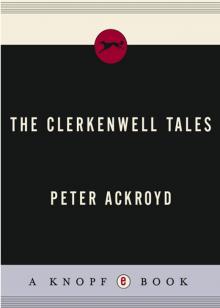 The Clerkenwell Tales
The Clerkenwell Tales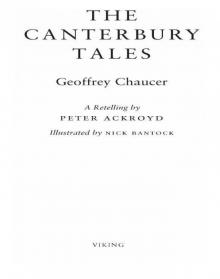 The Canterbury Tales
The Canterbury Tales J. M. W. Turner
J. M. W. Turner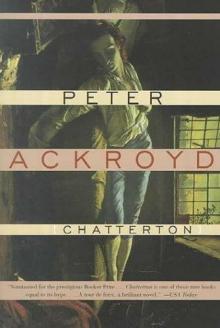 Chatterton
Chatterton The Canterbury Tales – A Retelling
The Canterbury Tales – A Retelling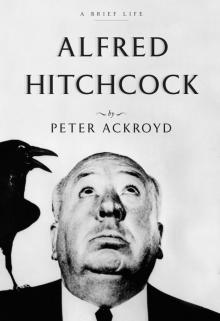 Alfred Hitchcock
Alfred Hitchcock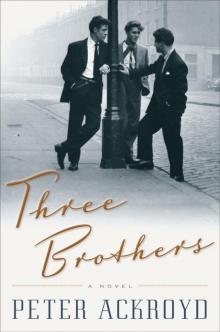 Three Brothers
Three Brothers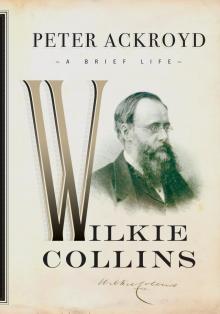 Wilkie Collins
Wilkie Collins Venice
Venice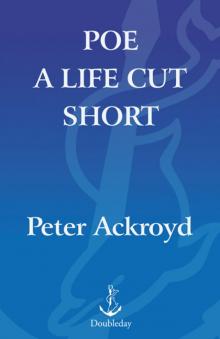 Poe
Poe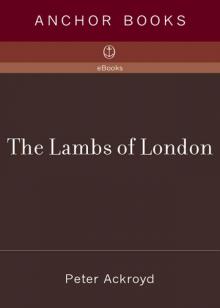 The Lambs of London
The Lambs of London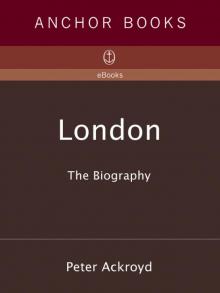 London
London Queer City
Queer City Revolution, a History of England, Volume 4
Revolution, a History of England, Volume 4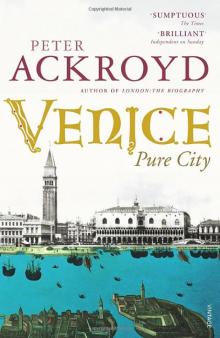 Venice: Pure City
Venice: Pure City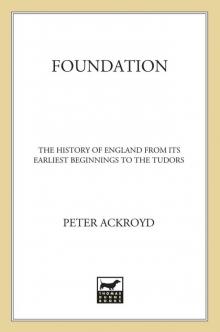 Foundation
Foundation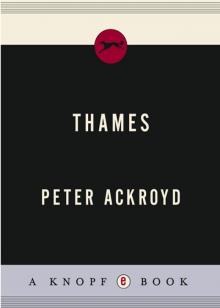 Thames
Thames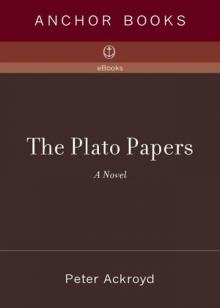 The Plato Papers
The Plato Papers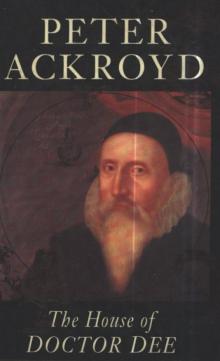 The house of Doctor Dee
The house of Doctor Dee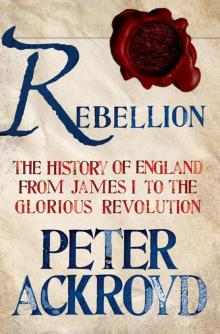 Rebellion: The History of England from James I to the Glorious Revolution
Rebellion: The History of England from James I to the Glorious Revolution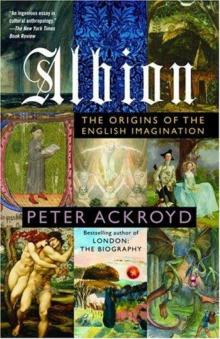 Albion: The Origins of the English Imagination
Albion: The Origins of the English Imagination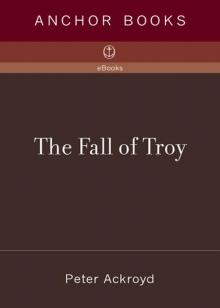 The Fall of Troy
The Fall of Troy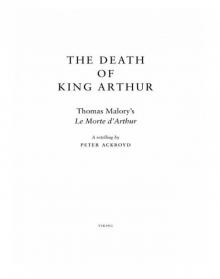 The Death of King Arthur
The Death of King Arthur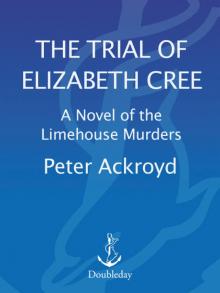 The Trial of Elizabeth Cree
The Trial of Elizabeth Cree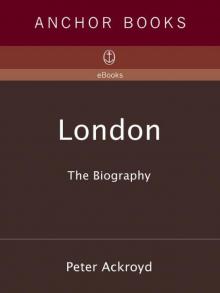 London: The Biography
London: The Biography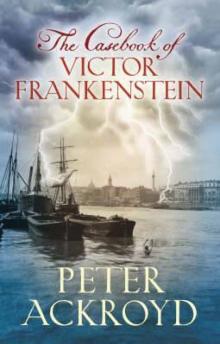 The Casebook of Victor Frankenstein
The Casebook of Victor Frankenstein Hawksmoor
Hawksmoor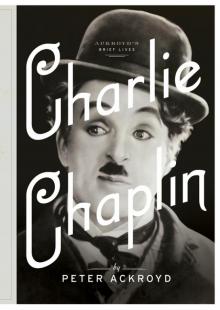 Charlie Chaplin
Charlie Chaplin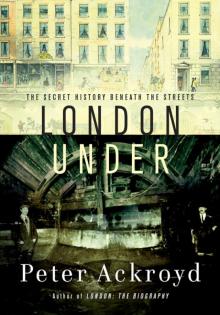 London Under
London Under